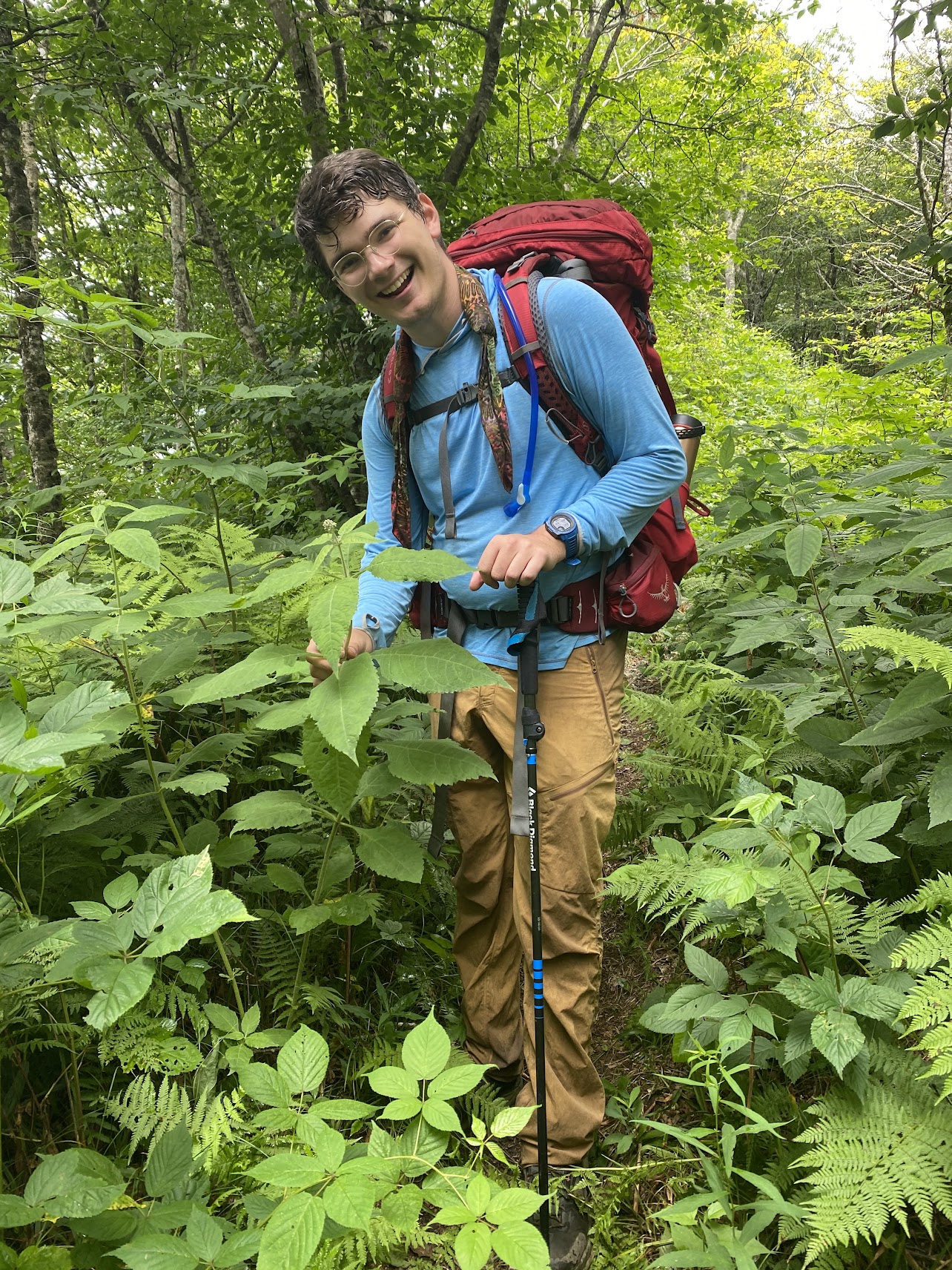Herbarium Staff

Kathy Mathews, PhD
Director, WCUH Herbarium
I specialize in flowering plant systematics, which seeks to explain patterns of diversity and understand species relationships and boundaries. I mainly study problems in the taxonomy, biogeography, and evolutionary relationships of southeastern and southern Appalachian plant groups. Work in progress with MS students includes biodiversity of high-elevation rock outcrops, systematics of bush honeysuckle (Diervilla) and hybridization in the Trillium erectum complex. Recent publications with graduate students include phylogeography of sand myrtle (Kalmia buxifolia), and systematics of Southern Appalachian saxifrages (Micranthes). Our research tools include field work, herbarium studies, molecular phylogenetics of DNA sequences, and DNA fragment analysis.
To be filled in later
Quinlan, E.J.*, K.G. Mathews, B. Collins and R. Young. 2020. Phylogenetic divergence and ecophysiological variation in the disjunct Kalmia buxifolia (sand-myrtle, Ericaceae). Systematic Botany 45(4): 900-912.
Lanning, M.* and K.G. Mathews. 2019. Taxonomy, distribution and lectotypification of two rare, Southern Appalachian saxifrages, Micranthes careyana and M. caroliniana. Castanea 84(1): 93-108.
Mathews, K.G, M.S. Ruigrok*, and G. Mansion. 2015. Phylogeny and Biogeography of the Eastern North American Rose Gentians (Sabatia, Gentianaceae). Systematic Botany 40(3): 811-825.
Mathews, K.G. and B. Collins. 2014. Plant and pollinator communities of high elevation rock outcrops. Natural Areas Journal 34(3): 300-309.
Pate, S.J., J.A. Clement, J.H. McCoy, S.L. Lance and K.G. Mathews. 2012. Development and characterization of microsatellite markers for Actaea racemosa L. (black cohosh, Ranunculaceae). American Journal of Botany 99: e274-e276.
Weakley, A.S., R.J. LeBlond, B.A. Sorrie, T. Witsell, D. Estes, K.G. Mathews, A. Ebihara and K. Ghandi. 2011. New combinations, rank changes, and nomenclatural and taxonomic comments in the vascular flora of the southeastern United States. J. Bot. Res. Inst. Texas 5: 437-455.
Popovkin, A.V., K.G. Mathews, M.C. Molina, and L. Struwe. 2011. Spigelia genuflexa (Loganiaceae), a new geocarpic species from northeastern Bahia, Brazil. Phytokeys 6:47-65.
Mathews, K.G., J. Huguelet,* M. Lanning,* T. Wilson,* and R. S. Young. 2009. Clonal diversity of fruiting culms within stands of Arundinaria gigantea (Poaceae; Bambusoideae) in western North Carolina assessed using AFLP fingerprints. Castanea 74(3): 213-223.
Mathews, K., N. Dunne, E. York, and L. Struwe. 2009. A phylogenetic analysis and taxonomic revision of Bartonia (Gentianaceae-Gentianeae), based on molecular and morphological evidence. Systematic Botany 34: 162-172.
Struwe, L., V.A. Albert, M.F. Calió, C. Frasier, K. B. Lepis, K.G. Mathews, & J.R. Grant. 2009. Evolutionary patterns in neotropical Helieae (Gentianaceae): evidence from morphology, chloroplast and nuclear DNA sequences. Taxon 58(2): 479-499.
Struwe, L. and K. R. Gould. 2004. Redefinition of Symbolanthus to include Wurdackanthus (Gentianaceae–Helieae). Novon 14: 354-359.
Gould, K. R. and M. J. Donoghue. 2000. Phylogeny and biogeography of Triosteum (Caprifoliaceae). Harvard Papers in Botany 5: 157-166.
Gould, K. R. and R. K. Jansen. 1999. Taxonomy, phylogeny, and the origin of a Gulf Coast disjunction in the Coelostylis species complex of Spigelia. Lundellia 2: 1-13.
Gould, K. R. 1999. Three new species of Spigelia (Strychnaceae) from Mexico. Brittonia 51: 407-414.
Gould, K. 1996. A New, Disjunct Variety of Spigelia gentianoides from Bibb Co., Alabama. Sida 17: 417-421.
Contact Dr. Mathews

Brandon Wheeler
M.S. Student
Curation Assistant
Email: btwheeler1@catamount.wcu.edu
Research:
I am utilizing molecular and morphological methods to study the taxonomy of the species within the genus Robinia (commonly referred to as locusts) in the Southern Appalachians. This research is emphasizing the phylogeny and conservation of two rare species in our region: R. viscosa (Clammy Locust) and R. hartwigii (Hartweg’s Clammy Locust).
